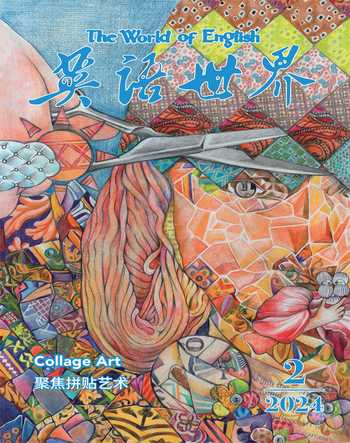Inspiring Communities from Around the World全球魅力族群
李小雪/译
Come with us as we discover some of the most fascinating communities from around the world and learn about their origins, their traditions and how they’ve developed over time. From ancient civilizations that have stood the test of time to newly formed communities that break stereotypes, get an insight into how these people came together.
跟随我们一起探索世界各地最具魅力的族群,了解它们的起源、传统和发展历程。从经受住时间考验的古老文明到打破刻板印象的新型社区,让我们深入了解这些地方的人如何聚集在一起。
1. The Haenyeo Community in South Korea
1. 韩国的海女
The haenyeo community is a group of female divers in the Korean province of Jeju. The word “haenyeo” refers to the women who gather seaweed, abalone and other shellfish from the sea. Jeju’s diving tradition started way back in 434 AD, but it wasn’t until the 18th century that the amount of female divers outweighed the male. Supposedly this shift occurred because of a significant number of men dying at sea due to war and deep-sea fishing accidents.
海女是韩国济州的一群女性潜水员。“海女”一词指的是从海洋中采集海藻、鲍鱼和其他贝类的女性。济州岛的潜水传统可以追溯到公元434年,但是,直到18世纪女性潜水员的人数才超过男性潜水员。据说,之所以出现这种转变是因为许多男性死于战争和深海捕鱼事故。
2. The Miao embroiderers in China
2. 中國的苗族绣娘
Embroidery is a traditional folk art of the Miao people who live in the mountains of Southern China. Histor-ically, Miao embroidery has been considered one of China’s 5 great traditions of embroidery. It is a craft handed down from generation to generation among Miao women, who produce works of art inspired by traditional Miao songs and legends.
刺绣是生活在中国南方山区的苗族的一项传统民间艺术。历史上,苗绣被认为是中国五大刺绣传统之一。这是苗族妇女代代相传的工艺,她们从传统的苗族歌曲和传说中汲取灵感,创作出艺术绣品。
In Miao villages, girls begin learning embroidery from their mothers and aunts at a young age. Starting from the age of 15, girls begin to hand embroider their own dowry, an ornate embroidered garment. While they work they are not only refining their skills as embroiderers, they are also coming to know their own culture.
在苗族村庄,女孩从小就开始向母亲和姨娘婶婶学习刺绣。从15岁开始,女孩们就开始手工绣制自己的嫁衣——一件华丽的刺绣服装。她们在绣制时,不仅是在磨练刺绣技能,也是在了解自己的文化。
3. The Khasi Community in Meghalaya
3. 印度梅加拉亚邦的卡西族
The Khasi people are an indigenous ethnic group of Meghalaya in north-eastern India with a population of 3.35 million. A unique feature of this community is that they follow the matrilineal system of descent and inheritance, meaning the youngest daughter inherits, children take their mother’s surname and when no daughters are born to a couple, they adopt a daughter and pass their rights to property to her.
卡西族人是印度东北部梅加拉亚邦的土著族群,有335万人口。这个族群的独特之处在于他们遵循母系血统和继承制度,这就意味着最小的女儿会继承家产,而且孩子们随母姓。如果一对夫妻没有生出女儿,他们就会收养一个女儿并将财产权传给她。
4. The Ndebele people of South Africa
4. 南非的恩德贝莱人
The Ndebele people are of the Bantu Tribe in South Africa and are known for their beadwork. Prior to the Second World War most Ndebele work had a white seed bead base with simple designs in blue, black and red. After the war, bolder designs to match their houses started to appear.
恩德贝莱人属于南非班图族,以其珠绣而聞名。在第二次世界大战前,大多数的恩德贝莱珠绣作品都是以白色种子珠为基底,配以简单的蓝、黑和红色珠子图案设计。二战结束后,出现了与他们的房屋相匹配的更大胆的设计。
5. The Dinka people from the banks of the Nile
5. 来自尼罗河沿岸的丁卡人
The Dinka people are a community that live in the east and west banks of the River Nile in South Sudan. They are a domesticated community, mainly living on traditional agriculture and pastoralism. Cattle husbandry is source of cultural pride, but not for the commercial profit or for meat, but rather for cultural demonstrations, rituals, dowries and milk feeding for all ages it provides them.
丁卡人是生活在南苏丹尼罗河东西两岸的一个部族。他们过着田园生活,主要以传统农业和畜牧业为生。养牛是丁卡人文化自豪感的来源,但并非为了卖钱或吃肉,而是因为牛可以用于文化展示和仪式、充当嫁妆,还能为各个年龄段的人群提供牛奶作为食物。
6. Brazil’s indigenous people, the Juma
6. 巴西土著人——朱玛人
The Juma are an indigenous people of Brazil and the Juma indigenous land had 38,351 hectares, some of which was separated and sold off in 2004. The tribe is located on the banks of the Assuã River, more than 1,100 kilometers from Manaus, the capital of Amazonas. In the 18th century the Juma group had about 15,000 indigenous people—today there are only four left.
朱玛人是巴西的土著人,朱玛土著保护区的面积有38,351公顷,其中一部分在2004年被分割和出售。该部落位于阿苏昂河畔,距离亚马孙州首府马瑙斯市超过1100公里。在18世纪,朱玛族群拥有约1.5万名土著居民,而如今却只剩下4人。
(译者为“《英语世界》杯”翻译大赛获奖者)

